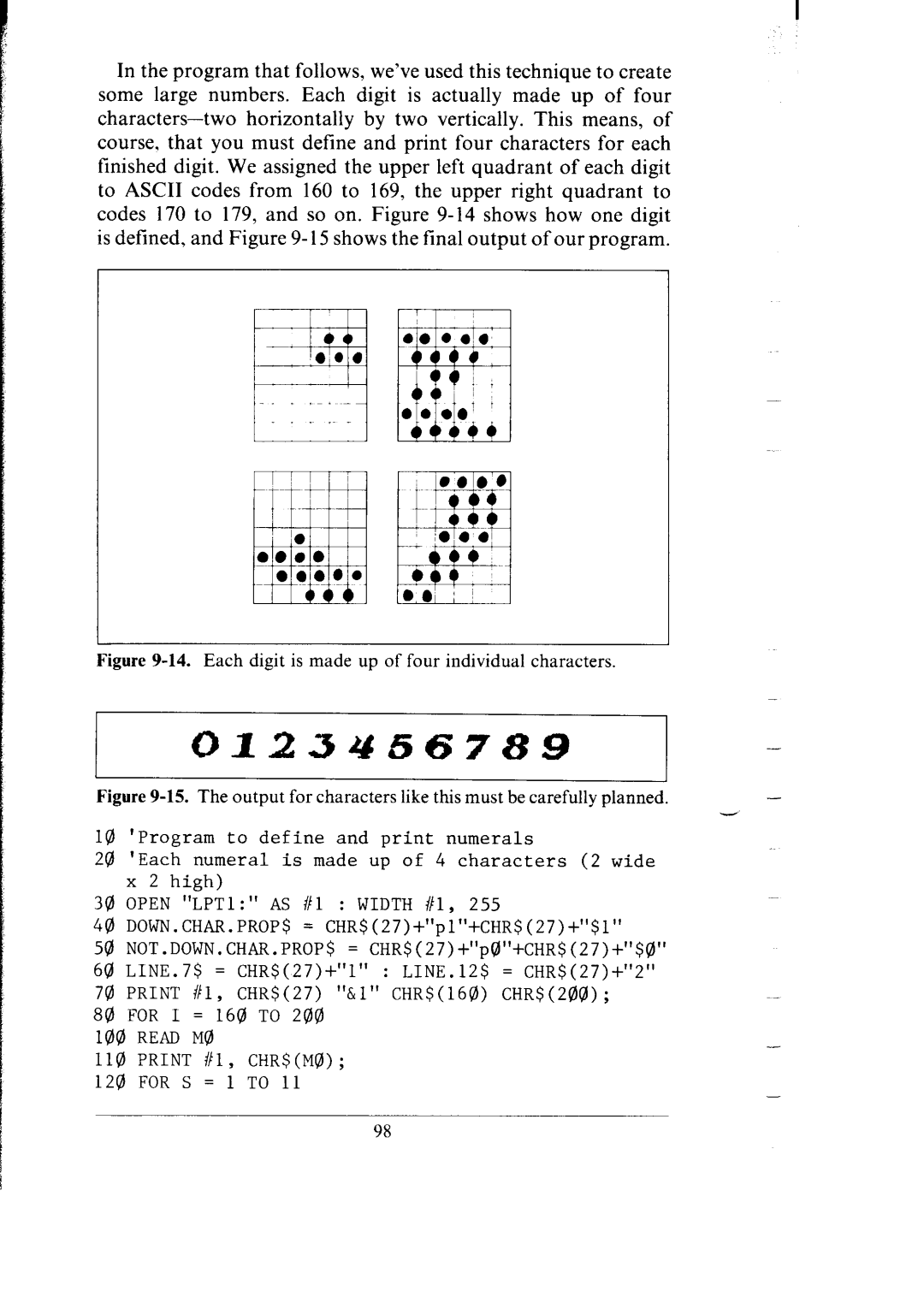
In the program that follows, we’ve used this technique to create some large numbers. Each digit is actually made up of four
Figure 9-14. Each digit is made up offourindividualcharacters.
0.223456789-
Figure9-15. The outputforcharacterslikethismustbecarefullyplanned. -
18 'Program to define and print numerals
241 'Each numeral is made up of 4 characters (2 wide x 2 high)
3p)OPEN "LPTl:" AS #l : WIDTH f/l,255
44)DOWN.CHAR.PROP$ = CHR$(27)+"pl"+CHR$(27)+"$1" 541NOT.DOWN.CHAR.PROP$ = CHR$(27)+"pfl"+CHR$(27)+"$@' 60 LINE.7$ = CHR$(27)+"1" : LINE.12$ = CHR$(27)+"2" 70 PRINT #l, CHR$(27) "61" CHR$(16@) CHR$(20@);
80 FOR I = 160 TO 200
100 READ M(d
110PRINT j/l,CHR$(MP));
120FOR S = 1 TO 11
-
-
98
